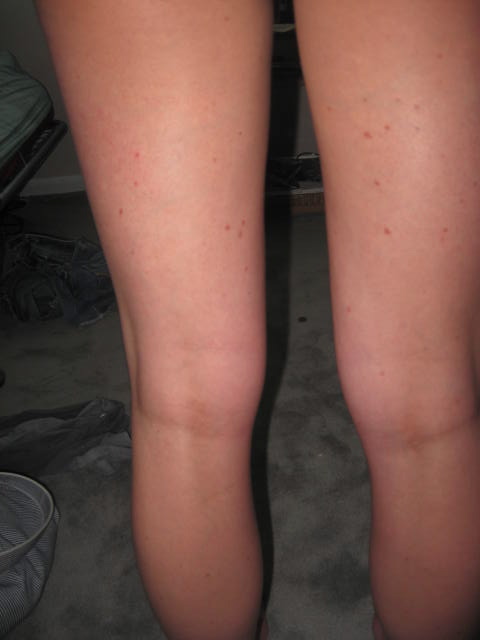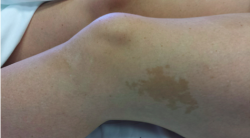CORRECT DIAGNOSIS:
Black Hairy Tongue
DISCUSSION:
Hairy tongue is a common, benign clinical condition that represents the accumulation of varying amounts of keratin on the dorsum of the tongue. The condition is caused by defective desquamation of the filiform papillae that results from a variety of precipitating factors. The condition is most frequently referred to as black hairy tongue (lingua villosa nigra); however, hairy tongue may also appear brown, white, green, or pink depending on the specific etiology and secondary factors (eg, use of colored mouthwashes, breath mints, candies). Factors that may be associated with increased production of keratin include smoking, poor oral hygiene, use of oxidizing mouthwashes, and hot beverages. Other factors include the use of broad-spectrum antibiotics and therapeutic radiation to the head and neck. All cases of hairy tongue are characterized by hypertrophy and elongation of filiform papillae, with a lack of normal desquamation. Normal filiform papillae are approximately 1 mm in length, whereas filiform papillae in hairy tongues have been measured at more than 15 mm in length.
Hairy tongue affects both sexes and all ages ranging from 8.3% in children and young adults to 57% in persons who are addicted to drugs and incarcerated. Hairy tongue has been reported with greater frequency in males, those who use tobacco, those who heavily drink coffee and tea, patients infected with HIV, and those who are HIV negative and use intravenous drugs. Hairy tongue presents as diffuse hair-like projections on the dorsum of the tongue, especially in the middle region. The elongated papillae are usually yellow to brown-black. Papillae, which are normally minimally keratinized and appear pinkish white. Bacterial and fungal overgrowth plays a role in the color of the tongue. Some patients complain of bad breath, bad taste, or a gagging sensation when the tongue contacts the palate.
Microscopic examination reveals pronounced accumulation of parakeratin at the tips of the filiform papillae. Often bacteria can be seen colonizing the surface. The basic defect in hairy tongue is a hypertrophy of filiform papillae on the dorsal surface of the tongue, usually due to a lack of mechanical stimulation and debridement. This condition often occurs in individuals with poor oral hygiene (eg, lack of tooth brushing, eating a soft diet with no roughage that would otherwise mechanically debride the dorsal surface of the tongue). Histopathologic findings in hairy tongue reveal pronounced accumulation of parakeratin at the tips of the filiform papillae with mild hyperkeratosis and occasional inflammatory cells. Finding accumulated debris intermingled among the papillae and candidal pseudohyphae is not unusual. No other specific microscopic findings are associated with this entity.
TREATMENT:
Hairy tongue is a benign condition requiring no treatment. Some patients desire treatment due to the unaesthetic nature of the process, or because of the altered taste, bad breath, or gagging sensation. In many cases, simply brushing the tongue with a toothbrush or using a commercially available tongue scraper is sufficient to remove elongated filiform papillae and retard the growth of additional ones. The topical application of retinoids has been used with some success. Keratolytic agents are effective but may be irritating. Surgical removal of the papillae by using electrodesiccation, carbon dioxide laser, or even scissors is the treatment of last resort when less complicated therapies prove ineffective.
REFERENCES:
Oral changes associated with tobacco use. (2003). American Journal of Medical Sciences, 326(4), 179-182. PMID: 14519134
Glick M. (2000). Tobacco-associated lesions of the oral cavity: Part I. Nonmalignant lesions. Journal of the Canadian Dental Association, 66(5), 252-256. PMID: 10804453
Black hairy tongue. (1990). American Family Physician, 41(6), 1751-1755. PMID: 2180427
Fretzin DF, Rosenthal L. (1987). Glossodynia and other disorders of the tongue. Dermatologic Clinics, 5(4), 687-693. PMID: 2824157
Lingua villosa nigra—A review of black hairy tongue. (1967). Journal of Oral Medicine, 22(1), 18-21. PMID: 6056570
Bolognia, J. L., Jorizzo, J. L., Rapini, R. P., et al. (2003). Dermatology (1st ed.). Spain: Mosby.




